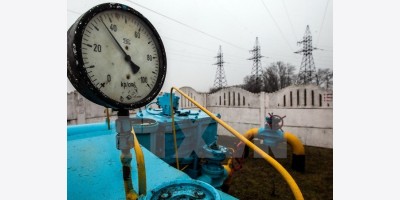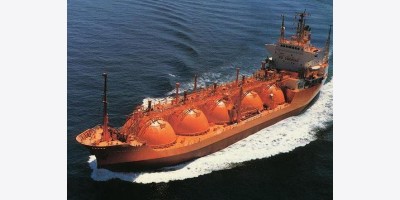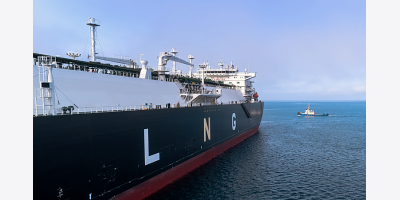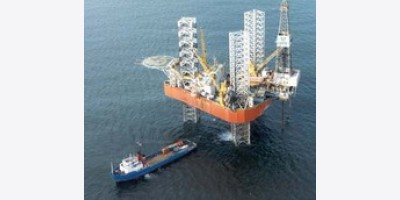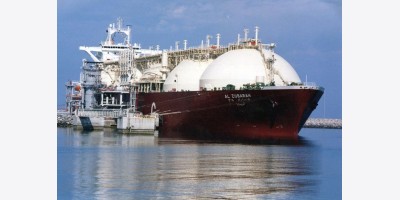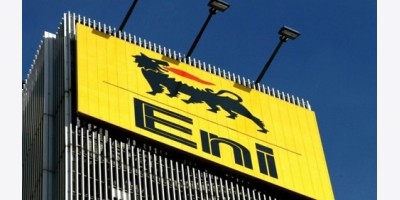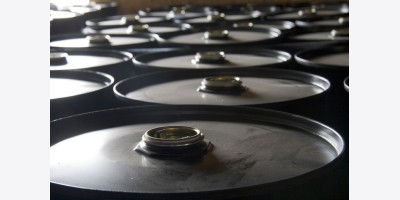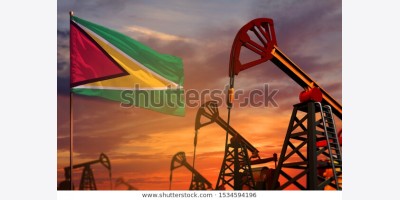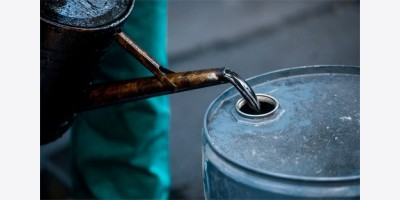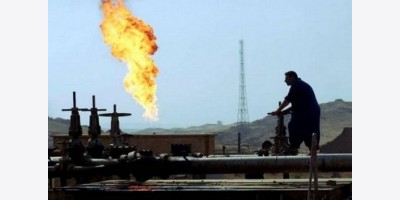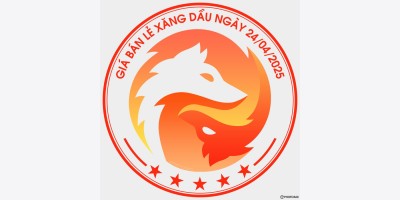Kurdistan delegation to seek deadline for settling disputes with Baghdad
Erbil will set a deadline for the resolution of its disputes with Baghdad during upcoming talks to form a new Iraqi central government, Kurdistan Regional Government Prime Minister Nechirvan Barzani said.
In a statement posted on its website late Wednesday, the KRG cited Barzani as saying that a Kurdish delegation, which would soon head to Baghdad, would raise issues related to natural resources, among other matters. “The Prime Minister emphasized that the delegation will advocate government formation quickly, but the Kurdistan Region has its requests,” the KRG said.
It listed the allocation of a budget for Kurdistan’s Peshmerga armed forces, federal budget distribution and matters regarding natural resources as among the region’s chief concerns. “It was decided that the negotiating team would discuss these issues with Baghdad, with the understanding that they cannot be implemented in two weeks. All political parties of the team agreed on a deadline for the requests,” the KRG said.
Barzani said the KRG wishes to resolve disputes legally, as provided for in Iraq’s constitution, even in areas under KRG control. However, based on past unproductive experiences with the Iraqi administration under former prime minister Nouri al-Maliki, there were no guarantees or assurances of an agreement between Erbil and Baghdad, he added.
Barzani said that, after suspending federal budget transfers to the KRG in March, Baghdad still had not released salaries for civil servants working in Iraqi Kurdistan. The KRG prime minister made his comments following a meeting with Iraqi parliament speaker Yousif Mohammed.
During the administration of former Iraqi Prime Minister Nouri al-Maliki, Erbil and Baghdad had been at loggerheads for years in an acrimonious dispute over oil jurisdiction, territory and payments. Relations between the two governments sank to a nadir in March when Maliki’s government cut off federal budget transfers to the KRG in retaliation for what it said were illegal direct exports of Kurdish crude, by passing the federal export and marketing system.
Shell closes in on sale of four oil fields, pipeline in Nigeria
A Shell-led consortium is close to selling some of its onshore oil fields in Nigeria’s Niger Delta, according to a company spokesman Thursday.
The move comes amid concerns over industrial-scale oil theft, pipeline sabotage and security problems in the country. Shell is selling its 30% stake in four blocks, with France’s Total and Italy’s Eni also set to profit from their 10% and 5% interests. State-owned Nigerian National Petroleum Corporation holds the remaining 55%.
“We have signed sales and purchase agreements for some of the Oil Mining Leases but not all that we are seeking to divest,” the Shell spokesman said.
Shell last year put up for sale its 30% stake in Oil Mining Licences 18, 24, 25, 29 and a major pipeline, the Nembe Creek Trunk Line. Several local and international companies have submitted bids for Shell’s stake in the most coveted OML 29 block, which produces around 62,000 b/d and 20,000 Mcf/day of gas, according to sources close to the process.
Nigerian energy trading company Talevras, Switzerland-based Aiteo IS45 and Nigeria’s Seplat, which is controlled by France’s Maurel & Prom, offered bids of over $2 billion for the asset, which houses the Olobiri, Santa Barbara and Odeama fields. Nigerian tycoon Ali Dangote is also among the bidders for Shell’s stake in the OML 18 gas field.
No details were available on the value of the deals for Shell nor when the full process would be completed. Shell has already earned $2.7 billion from asset sales in Nigeria since 2010 as majors choose to offload onshore fields in the Niger Delta, where divestments are growing due to maturing fields, oil theft and the government’s policy to boost local participation in the sector.
Sudan’s Sep Nile Blend exports rise to 1.2 million barrels
Sudan’s Nile Blend crude exports for September loading are expected to total 1.2 million barrels, up 50% from August, traders said Thursday.
Two cargoes of 600,000 barrels are expected to be load in September, up from one 600,000-barrel cargo in August. The preliminary program showed a 439,500-barrel stem held by Malaysia’s Petronas which will load with a 160,500-barrel parcel held by India’s ONGC Videsh Ltd’s, a source said.
The combined cargo is expected to load over September 28-30 from Sudan’s Marsha Bashayer terminal. China National Petroleum Corp. is expected to hold one 600,000-barrel cargo for loading in September, although the loading date for the cargo could not be immediately confirmed.
Earlier this month, CNPC was heard to have sold a 600,000-barrel cargo of the medium sweet crude for loading over August 29-31 to Chinaoil, traders said. Nile Blend crude exports to date this year have been sourced from oil fields in Sudan’s Kordofan state, which has an estimated output of 60,000 b/d, while production of the crude from neighboring South Sudan remains shut-in.
Rebels loyal to South Sudan’s former vice president Riek Machar shut down production at the country’s Unity state in January after a failed coup against President Salva Kiir on December 15 last year. Unity state previously produced 40,000-50,000 b/d.
South Sudan plans to bring engineers from Sudan to restart operations at the oil fields in Unity state, but it remains unclear when production will resume.
South Sudan’s vice president James Wani Igga told a business meeting in the national capital Juba Wednesday that the country’s oil production has dropped by nearly half since conflict erupted in the country in December 2013. This is the first time the presidency has publicly shed light on the status of South Sudan’s oil output to the business community since the conflict began.
Libyan NOC leaves most OSPS steady in September; lowers Es Sider, Amna
Libya’s National Oil Corp. has left the official selling prices for the majority of its crude export grades loading in September unchanged from those for August, sources said Thursday, as crude production continues to ramp up across the country.
A representative for NOC could not immediately be reached to confirm the levels. In contrast, the company lowered the OSPs for its major Es Sider and Amna crude grades by 10 cents/barrel each compared with August to Dated Brent minus $1.10/b, the sources said.
The two grades — which load out of the country’s first- and third-largest export terminals, respectively — resumed loadings in August after coming to a halt more than a year earlier, paving the way for fresh production at the fields that feed them.
Es Sider and Ras Lanuf were the last of the land-based crude export terminals to resume loadings as the central government has gradually regained control of the country’s energy sector following more than a year of disruption.
Additionally, the company raised the price of its Brega crude by 10 cents/b to Dated Brent minus $1.25/b. The crude, which loads out of the 60,000 b/d Marsa al-Brega terminal on the Gulf of Sidra, has been one of the country’s most consistent grades throughout the recent unrest. The official selling prices for the rest of the country’s crudes, including its Sharara and Mellitah grades, were left unchanged from August’s levels.
September Primorsk Urals crude program sees 100,000 mt cargo removed
One 100,000 mt cargo has been pulled from the September Urals crude loading program out of the Baltic Sea port of Primorsk, according to a copy of the final signed schedule seen by Platts Thursday.
This brings total scheduled exports out of the terminal for the month to 3.4 million mt. A Lukoil cargo that was in the provisional loading program released earlier this week is not present in Thursday’s final schedule.
The excised volume appears to be from the second decade, though which of Lukoil’s cargoes has been removed remains unclear, with several laycans throughout the period shifted between various parties.
Additionally, the final Novorossiisk schedule contains an additional 40,000 mt of Urals of KazTransOil equity scheduled to co-load on an existing cargo. This volume was not present in the provisional schedule seen Tuesday.
Finally, a Siberian Light cargo of Gazprom equity scheduled to load September 29-30 out of Novorossiisk has been expanded to a full 80,000 mt Aframax cargo; the provisional schedule had the volume in at 44,000 mt.
There were no alterations to the Ust-Luga loading program in the final schedule. The Urals program typically comes out in several stages and is often subject to change between the publication of the provisional programs and the final, signed program. Changes to the loading schedule after the publication of the signed version are uncommon.
Houston (Platts)--28Aug2014/344 pm EDT/1944 GMT
Rail traffic for crude oil and petroleum products in the US rose 743 units for the week ending August 23 to 16,396 carloads, a 28.4% increase from the same time last year, data from the Association of American Railroads showed Thursday.
Shipments rose above 16,000 carloads for only the fourth time this year, and remained well above the year-to-date average of 14,953 carloads per week. Year-to-date shipments totaled 508,403 carloads, up 10.5% from the same time last year.
Total rail shipments decreased 3,771 units to 300,505 carloads, but remained 3% above traffic the same week last year. So far this year, total shipments are at 2,682,698 carloads, up 3.7% from last year.
Canadian crude and products shipments dropped from their 2014 high, down 151 units to 7,795 carloads, though at 247,682 carloads, the year-to-date volume is 11.1% above that of the same period last year.
Mexican crude and products traffic remained weak, rising 49 units to 379 carloads, compared to a year-to-date average of 418 carloads.
Singapore (Platts)--28Aug2014/436 am EDT/836 GMT
Thailand's crude and condensate imports in July rose 4.7% from a year earlier to an average 666,591 b/d, including rare volumes from Colombia and Pakistan, according to data from the country's customs department released Thursday, August 28.
Total crude imports for the month were up 5.5% year on year at 632,710 b/d, although condensate inflows slid 7.5% year on year to 33,881 b/d.
The United Arab Emirates remained Thailand's largest supplier of crude oil last month, even though shipments plunged 36.1% year on year and 29.5% month on month to 144,946 b/d.
Saudi Arabia was in second place with 125,897 b/d, which was an 18.5% increase from July 2013, although the volume fell 17.3% from June this year.
Australian crude imports were up 285.4% year on year in July to 82,467 b/d while cargoes from Russia and Qatar both nearly doubled from a year ago to 93,605 b/d and 72,506 b/d, respectively.
Thailand also received 7,819 b/d of crude from Colombia last month -- the first import from the Latin American country since March 2011.
Star Petroleum Refining Public Co. bought a partial cargo of Colombia's Castilla Blend crude for delivery in July, trade sources said Thursday.
The company, a joint venture between state-owned PTT and Chevron, has a 155,000 b/d refinery in Map Ta Phut.
PTT also purchased another partial cargo of Castilla earlier this month for mid-September delivery, Platts reported previously.
The move comes as grades from Latin America and Africa have become more competitive against Middle Eastern grades due to the narrowing spread between Brent and Dubai crude benchmarks in recent months.
Thailand's condensate imports in July primarily came from Indonesia, with volumes averaging 27,030 b/d, compared with none in July 2013 and 12,396 b/d in June this year.
Thailand also imported 6,827 b/d of condensate from Pakistan in July.
This is the first time that it has brought in any crude or condensate from Pakistan since June 2005.
Over January-July, Thailand's total crude and condensate imports fell 11.3% year on year to 805,666 b/d, with crude volumes down 11.6% year on year to 767,357 b/d, while condensate inflows declined 3.7% to 38,309 b/d, the data also showed.
Crude imports from the UAE were down 33% from the same period last year to 251,954 b/d, while Saudi cargoes slipped 4.1% year on year to 151,363 b/d.
There were notable increases in crude shipments however, from Qatar, Russia, Australia and Nigeria.
In the first half of the year, Thailand produced 232,735 b/d of crude from its domestic fields, while exports were 12,424 b/d.
In the downstream sector, throughput at the country's refineries totaled 1.02 million b/d, according to data from the country's Energy Policy and Planning Office at the Ministry of Energy.
Tokyo (Platts)--28Aug2014/348 am EDT/748 GMT
Japan's largest refiner JX Nippon Oil & Energy plans to process 4.82 million kiloliters or 1.01 million b/d of crude for the domestic market in September, down 5% year on year, a company official said Thursday.
The company's August oil products exports dropped 42% year on year to 420,000 kl as a result of recent capacity cuts and deteriorated margins for the products exports, the official said.
Japan is in its peak summer oil demand season, when the weather has an impact on demand for crude and fuel oil for thermal power generation and motor fuel.
Japan's summer driving season normally peaks in July and August, and the peak power demand season typically spans July-September.
In August, Japan's fuel oil demand for power generation was estimated to have dropped 31% year on year to 770,000 kl or 156,231 b/d, due mainly to a series of torrential rains, which lowered temperatures and demand for air conditioning in western Japan, the official said.
Japan's estimated fuel oil demand for power generation in August was the lowest for the month since the country had fuel oil demand of 750,000 kl or 152,173 b/d in August 2010, marking the lowest demand since the devastating March 2011 earthquake, the official said.
Japan's gasoline demand was estimated to have fallen 5% from a year ago to 5.06 million kl or 1.03 million b/d in August, when the country's demand for the motor fuel peaks for summer driving season, the official added.
London (Platts)--28Aug2014/801 am EDT/1201 GMT
Backwardation in the Northwest European high sulfur fuel oil market soared to a near five-month high Thursday as the 3.5% FOB Rotterdam barge physical premium to the front-month swap hit $6.00/mt.
The last time it was as high was April 4.
Traders said this was due to large arbitrage volumes to Asia, which have cleared oil from the region.
"The arbitrage [to Singapore] was open, everyone's moved oil," one trader said. "We were looking last week when the arb was opened, but we struggled to find oil."
Shipbrokers have recently reported a flurry of Suezmaxes on subjects for loading fuel oil from Northwest Europe to Asia for late August/early September dates.
Meanwhile, the front-month/second-month 3.5% barge swap moved to a $3.50/mt backwardation Wednesday, the widest since October 3, 2013, Platts data shows, after having traded largely range bound since June.
"There are some flows East, but also think some short covering taking place," a swaps trader said.
"I think [the recent strength in 3.5% barge swaps] is on the back of Singapore and recent arb activity, as well as low liquidity and the month-end rollover.
August/September is pricing strong so people don't want to stay short," a second swaps trader said.
The European LSFO derivatives complex moved into backwardation Wednesday for the front two months on the steepening HSFO barge backwardation, having traded flat or contango since July 15.
The 1% FOB NWE cargo and 1% FOB Rotterdam barge swaps both moved into a $1.50/mt backwardation between September and October Wednesday, having traded flat Tuesday.
However, the market remains long LSFO in Northwest Europe, where depressed demand and large sweet crude runs at regional refineries have left a glut of oil that saw the physical hi-lo -- the differential of 1% FOB NWE cargoes to 3.5% FOB Rotterdam barges -- crash from $62/mt on May 23 to a 2014 low of $0/mt on August 8 and the lowest since August 2, 2013, Platts data shows.
"There's been no real change fundamentally [in the LSFO complex], the move is due to the rally on [HSFO] barges ... some of the overhang is clearing in LSFO but demand remains very weak," a trader said.
The physical to front-month swap differentials for both LSFO barges and cargoes both remain in contango.
Physical barges were assessed at a $1.75/mt discount to the September swap, while physical cargoes were assessed at a $1.25/mt discount, Platts data shows.
Refinery production of LSFO is expected to sustain recent volumes in September, with sweet crude margins still favorable over sour grades, sources said.
"There's usual refinery production... sweet crude margins on the prompt are better than sour so no real change detected in the production pattern over September so far," a second trader said.
This is expected to cap the physical hi-lo's upside potential going forward, the trader said.
By Alessandra Migliaccio and Lorenzo Totaro Aug 28, 2014 9:02 PM GMT+0700
Italy may sell about $7 billion of stock in oil company Eni SpA (ENI) and energy producer Enel Spa (ENEL) as part of an effort to cap the country’s ballooning debt.
A Treasury official today confirmed newspaper reports that Prime Minister Matteo Renzi’s government is considering a sale of close to 5 percent of Italy’s biggest energy companies in the next few months. The Treasury owns about 30 percent of Rome-based Eni through both direct and indirect stakes and 31 percent of Enel.
“They’re selling off the family silver because there’s no other way to rustle up some quick cash,” said Carlo Alberto Carnevale Maffe, a professor of business strategy at Milan’s Bocconi University. “I would have sold the whole thing, while this is like selling a fork here, a knife there, yet keeping enough to still throw a good dinner party.”
Italy is experiencing lower-than-expected economic growth with the country’s central bank lowering its 2014 growth forecast last month to 0.2 percent, or less than a third of its previous prediction. That may undermine Renzi’s plans to cut spending, reduce debt, and keep the country’s deficit within the euro region’s limit of 3 percent of gross domestic product.
Eni fell 1.3 percent to 18.8 euros at 2:30 p.m. today in Milan trading, giving the company a market-value of 68 billion euros, while Enel lost 2.2 percent to 4 euros giving it a market value of 38 billion euros. At current prices the sale of 5 percent stakes is valued at about 5.3 billion euros ($7 billion).
That’s a fraction of Italy’s 2.2 trillion euro debt. At the end of 2013 Italy’s deficit-to-GDP ratio was at 3 percent. Finance Minister Pier Carlo Padoan told newspaper Corriere della Sera in an Aug. 27 interview Italy would keep to the EU target in spite of a downward revision of its GDP forecast.
Steered Clear
Previous governments have steered clear of selling stakes in Italy’s biggest state-owned companies. In 2012, Mario Monti’s government said it preferred to sell municipal-owned companies and other assets rather than dividend-rich Eni and Enel. In May, Padoan declined to comment on reports he wanted to sell stakes in the two energy producers.
In its economic and financial plan in April, the government said it planned to sell stakes in state-owned companies worth about 0.7 percent of GDP a year in the 2014-2017 period, bringing debt down to 125.1 percent of GDP from its estimate of 134.9 percent for this year. The government said it relied on the sale of stakes in Italy’s mail service Poste Italiane SpA and air traffic controller to rein in swelling public debt.
With plans to sell government real estate and privatize other state-owned entities like Poste held up by bureaucratic and legal obstacles, Renzi may be forced to find quicker solutions.
Debt Ratio
In a June 17 report, the International Monetary Fund said “the government’s privatization efforts should be completed quickly” and that Italy’s “fiscal policy needs to strike a delicate balance between setting the debt ratio on a downward path while avoiding excessive tightening” that could harm economic recovery.
“Government must show its commitment to meeting revenue targets from privatizations,” said Riccardo Barbieri, Chief European Economist at Mizuho International Plc in London. “If there were technical obstacles to immediate sales of stakes in Poste, Fincantieri, Enav, Sace, then the target must be achieved by reducing stakes in Eni and Enel.”
A sale would have little direct impact on the companies, with the Treasury remaining the biggest shareholder in both. Eni Chief Executive Officer Claudio Descalzi and Enel CEO Francesco Starace, both government nominees for their posts, have just been appointed for three-year terms.
“Nothing changes for the companies,” said Carnevale Maffe. “The government still has a strong grip which is why they’re selling small bits. They’re not willing to let go.”
To contact the reporters on this story: Alessandra Migliaccio in Rome at amigliaccio@bloomberg.net; Lorenzo Totaro in Rome at ltotaro@bloomberg.net
To contact the editors responsible for this story: Will Kennedy at wkennedy3@bloomberg.net Vidya Root, Patrick Henry
Thursday, 28 August 2014 12:04 By Ronald Musoke
[Stephen Birahwa Mukitale, the MP for oil rich Buliisa County in the Albertine region was one of the panelists during the symposium] Stephen Birahwa Mukitale, the MP for oil rich Buliisa County in the Albertine region was one of the panelists during the symposiumUganda’s oil reserves have shot up by 87% from 3.5 billion barrels following recent appraisals of 14 oil wells done by the three oil companies currently involved in the country’s oil sector.
A senior energy ministry official said following the evaluation of more oil wells which encountered oil during the exploration phase, Uganda’s inventory now stands at 6.5 billion barrels.
However, the recoverable quantity—the oil which can actually be sucked out of the ground— has only improved marginally, from 1.2 billion barrels to 1.4 billion barrels.
Ernest Rubondo, the Commissioner for Petroleum Exploration and Production Department (PEPD) was on Aug. 27 speaking at an oil conference organized by the Konrad Adenauer Foundation and Leo Africa Forum.
Rubondo explained that in the past, calculating recoverable quantities has not been as accurate, since it has always been based on analogies from somewhere else in the world. However, he said, Uganda is now relying on its own data.
“So far appraisals of 14 oil fields have been concluded and the companies have submitted applications for production licences,” he said.
It is not so clear why the recoverable quantities have not able to improve as markedly as the reserve figures but Rubondo said Uganda is going to take a closer look at new technologies that would help Uganda recover as much oil as possible.
Asked about the sudden rise in the reserves, Rubondo told The Independent that some of the fields had been discovered to be broader, while more oil had also been encountered in additional layers of some of the fields during the appraisal.
He said he expects more production licences to be issued by the government before the end of 2014, adding that many infrastructural developments will take off from 2015.
A year ago, the government issued its first production licence to the Chinese firm, CNOOC, following a satisfactory review of the firm’s field development plan.
That licence was issued for the Kingfisher discovery— one of the first discoveries announced almost eight years ago in the mid-western district of Hoima.
The government is also in the final stages of reaching an agreement on the most suitable lead investor for its 60,000 barrels-of-oil refinery and related downstream infrastructure it is planning to set up in Hoima.
The two bidders currently undergoing review are SK Group (South Korean consortium) and RT Global Resources (Russian consortium).
The government is also in the final stages of compensating and resettling families from Kabaale in Buseruka Sub County (Hoima)—where a 29 sq km of land has been procured to set up an oil refinery.
At the conference, Rubondo was also quick to dismiss the perception that Uganda will only be an oil producing country for about 30 years, insisting that this timeline is only for the oil resources discovered in the 21 oil wells being appraised at the moment.
“There is a possibility of the country producing beyond the 30-year timeline,” he said.
Rubondo said he expects the moratorium which was slapped by the government in 2007 on licensing new exploration firms to be lifted by the end of this year. As a result, the next licensing round could happen as early as next year, he said.
He said the next licensing round will be competitive; it will be advertised, announcing potential areas since PEPD has up todate data of the Albertine Graben.
Up to 60% of the Albertine Graben is currently on hold and according to energy ministry sources, over 80 companies are waiting for the moratorium to be lifted.
“The process will be gradual and most likely it will go out for areas with enough data,” Rubondo added.
Rubondo insisted that the ministry would aspire to achieve the highest standards in the oil and gas aspects around the world, adding that the ministry will continue working with Norway, Malaysia, Trinidad & Tobago, Australia and Nigeria.
Meanwhile Emmanuel Katongole, the incoming chairman of Uganda’s National Oil Company (NOC) said he expects the NOC to be run as an enterprise that will return profit to Uganda and also change lives of Ugandans.
Katongole who is also the executive chairman at Cipla Quality Chemical Industries Limited, a Kampala-based ARV manufacturing plant, was however quick to add that that would only happen as long as Ugandans learn to do things differently.
“I don’t see why Uganda should not benefit [from her oil resources],” he said.
Katongole said Uganda’s oil cannot only be the business for the president or the NOC but it will be for all Ugandans and whoever messes it up should be taken to book.
“There is no reason as to why we should not make it work,” he said.
Saudi Arabia's oil usage tops economic growth
Riyadh, 17 hours, 26 minutes ago
Saudi Arabia’s annual rate of energy consumption has grown to an average of 3.8 million oil barrels per day, marking an increase of more than 5 per cent while the economic growth rate reached 4 per cent, a report said.
The rate of consumption will reach 8.4 million oil barrels if the issue is not dealt with properly, the recent study by the Kuwaiti Diplomatic Center was quoted by Arab News.
Saudi Arabia has the highest rate of energy consumption in the world, the report said, adding that it reached more than 40 oil barrels annually per individual.
Energy consumption is mostly in the electricity sector and desalination with 52 per cent, followed by the transport and industrial sector with 21 per cent.
The report highlighted that Saudi Arabia needs to develop new income resources from natural gas, since the production equals the consumption currently.
Saudi Arabia should expand its production of natural gas as well as look for imports and explore solar power generation sources to meet electricity needs, the report said.
Benefit From the Latest Energy Trends and Investment Opportunities before the mainstream media and investing public are aware they even exist. The Free Oilprice.com Energy Intelligence Report gives you this and much more. Click here to find out more.
Royal Dutch Shell has begun selling five major oil assets in Nigeria as part of a plan to raise profits and cut $15 billion in costs by the end of 2015.
It is one of several large energy companies shedding assets in oil-producing countries with the goal of increasing profits and cutting costs. Several companies have focused on selling properties in Nigeria -- where sabotage and oil theft has been rising -- which has cost the county billions in reduced production.
In 2013, Shell offered for sale its shares in a key Nigerian pipeline, the Nembe Creek Trunk Line, as well as four oil blocks in the Niger Delta. Shell owns 30 percent of these properties; Total of France and Eni of Italy own 10 percent and five percent, respectively. The Nigerian National Petroleum Corp. owns the remaining 55 percent.
“We have signed sales and purchase agreements for some of the oil mining leases, but not all that we are seeking to divest,” a Shell spokesman said on Aug. 27. Shell did not disclose when the process might be completed or the total value.
So far in 2014, Ben Van Beurden, Shell’s CEO, has raised about $8 billion through asset sales. In early August, the company agreed to sell two gas assets in the United States for $2.1 billion.
In the Nigerian Shell deal, buyers have emerged, but two of them are still trying to negotiate the terms of their contracts. That process is expected to be completed in a few weeks, but it still will be up to the government in Abuja to approve any deal.
The Financial Times quoted two people familiar with the deal who estimated the overall price for the five Shell properties at $5.2 billion, but stressed that the amount could change during the process of the negotiations. On of them, a banker involved in the talks, said the buyers are exerting “a great display of the strength of the Nigerian indigenous oil industry.”
Since 2008, local oil companies, encouraged by the government, have expanded greatly, buying assets worth $5 billion from several global energy giants, transforming the country’s 60-year-old oil industry.
Nigerian oil companies including Oando, Deplat and Shoreline Natural Resources already have bought properties from the U.S. companies Chevron and ConocoPhillips. The pending purchases from Eni, Total and Shell are only the latest deals in the making.
As for the Shell deal, other Nigerian companies -- producer-traders such as Taleveras and Aiteo -- say they are prepared to pay $2.6 billion for the country’s largest oilfield and the Nembe Creek pipeline alone, the Financial Times reports, again quoting anonymous sources.
By Andy Tully of Oilprice.com
Thu Aug 28, 2014 8:40am EDT
* Supply rises by 90,000 bpd, led by Libya, Angola
* Output falls in Iraq; Gulf countries keep supply flat
* OPEC output stays above 30 million bpd supply target
By Alex Lawler
LONDON, Aug 28 (Reuters) - OPEC's oil production has risen in August from July, a Reuters survey found on Thursday, as a recovery in Libyan supply held up and Angola and Iran boosted supplies, outweighing a further decline in Iraq.
The survey also found Saudi Arabia and other core Gulf OPEC producers kept output largely flat and have not cut back to prop up prices, which in August dipped to a 14-month low near $101 a barrel, or to make room for higher Libyan output.
Supply from the Organization of the Petroleum Exporting Countries has averaged 30.15 million barrels per day (bpd) in August, up from 30.06 million bpd in July, according to the survey based on shipping data and information from sources at oil companies, OPEC and consultants.
The 12-member OPEC pumps a third of the world's oil. In August, the largest increase has come from Libya, where supply is up by 100,000 bpd. Still, a linear recovery looks unlikely, analysts say, due to continued conflict.
"I think it will continue, but with setbacks and very slowly," said Carsten Fritsch, commodities analyst at Commerzbank in Frankfurt. "It will not be a one-way street."
For now, increases in Libya, Angola and Iran have put OPEC's output above the group's nominal target of 30 million bpd for a second month. Involuntary outages, such as in Libya, kept output below 30 million bpd in earlier months of the year.
Another sizeable increase has come from Angola, where four cargoes of CLOV crude, a new stream operated by Total, have loaded in August, compared with none in July.
Iranian output climbed in August following a few months of lower sales, the survey found, on higher exports. Iranian output and exports have risen since the start of the year, following a softening of Western sanctions on Iran over its nuclear work.
Top exporter Saudi Arabia, Kuwait and the United Arab Emirates, kept supply to market largely flat, industry sources said. In Saudi Arabia, high levels of domestic crude burning in power plants offset lower exports, they said.
Of the countries with falling output, the biggest drop of 140,000 bpd has come from Iraq because of a decline in oil exports from its southern terminals due to weather delays.
Iraqi oil officials say the southern fields have not been affected by fighting in other parts of the country. But violence has hit supply of Kirkuk crude from the north and shut down the Baiji refinery, keeping crude output below Iraq's potential.
OPEC is not scheduled to meet to review output policy until November and a dip in prices - Brent crude reached $101.07 on Aug. 19, a 14-month low - has not caused concern, according to delegates and ministers.
"The decline in crude prices is due to seasonal fluctuations and will not last," Iran's oil minister, Bijan Zanganeh, was quoted on Tuesday by Iranian news service Shana as saying.
(Editing Mark Potter)
WASHINGTON, D.C. -- The amount of crude oil and refined petroleum products moved by U.S. railroads increased 9% during the first seven months of this year compared with the same period in 2013, the EIA has reported.
In July, monthly average carloadings of oil and petroleum products were near 16,000 carloads per week, according to the Association of American Railroads (AAR).
The increase in oil volumes transported by rail reflects rising U.S. crude oil production, which reached an estimated 8.5 MMbpd in June for the first time since July 1986.
AAR estimates that more than half of the nearly 460,000 carloads tracked in its petroleum and petroleum products category from January through July consisted of crude oil, up from around 3% in 2009.
With the average rail tank car holding around 700 bbl of crude oil, about 759,000 bpd of crude oil were moved by rail during the first seven months of 2014, equal to 8% of U.S. oil production.
The Bakken shale has provided a significant share of the total increase in U.S. oil production over the past three years.
North Dakota, now the second-largest oil producing state, provides nearly one out of every eight barrels of oil produced in the U.S. Between 60% and 70% of the more than 1 MMbpd of oil produced in the state has been transported to refineries by rail each month in the first half of 2014, according to the North Dakota Pipeline Authority.
In the future, proposed rules published in August by the U.S. Department of Transportation to improve the safety of tank cars will affect how crude oil is moved by rail, particularly trains that carry 20 or more carloads of oil. The proposed rules would require new oil tank cars constructed after October 2015 to have thicker steel and require retrofitting of existing tank cars. Voluntary actions by railroads in anticipation of the new rules have resulted in reduced speeds and increased inspections.
KUWAIT: Kuwait Oil Company (KOC) has denied some media reports that its prescribed level of oil production is lagging behind due to technical glitches, said a company official yesterday. Deputy CEO for Administrative and Financial Affairs at (KOC) Saad Al-Azmi said that the company was currently meeting its production quotas with no difficulties of any kind, dovetailing with its stated strategic plan whose ultimate near goal was to bring the production level to no less than 3.65 million barrels a day by the advent of the year 2020 and to maintain it thereafter for the foreseeable future.
With regard to the company’s projects through the period 2030, he said there were two in the pipeline directed at developing the oil fields in the west of Kuwait by using the process known as water injection. Water injection or water flooding refers to the method in the oil industry where water is injected into the reservoir or oil well, usually to increase pressure and thereby stimulate production. Water injection wells can be found both on-and-offshore, to increase oil recovery from an existing reservoir.
Furthermore, he noted that the company also had plans to undergo projects at its oil fields in the south and east of Kuwait which entailed setting up a crude oil collection or gathering center and a facility for water injection. Three more crude collection centers and a water injection facility were also earmarked for the company’s oil fields in the north of Kuwait, he said, adding that KOC’s immediate plans for the years 2015 and 2016 was to bring up the oil production level to 3.150 million barrels a day.
Latin American market In another development, Kuwait Petroleum Corporation (KPC) is the first GCC company to venture into the Latin American market through the selling of fuel oil to a Brazilian company, said an official yesterday. KPC’s fuel oil sales Chief Sheikh Salah Al-Sabah said in a press release that the corporation have sold fuel oil products to a Brazilian company specialized in the sulfur production in April. The Brazilian company’s purchase of fuel oil is a sign that Kuwaiti products are well received abroad, said Sheikh Salah ASabah. KPC will continue to expand its business abroad to achieve maximum profit, said the official.
WASHINGTON, D.C. -- Record-setting liquid fuels production growth in the U.S. has more than offset the rise in unplanned global supply disruptions over the past few years, although differences in quality and location suggest that the substitution may not be exactly 1-for-1, the EIA has reported.
U.S. liquid fuels production -- which includes crude oil, hydrocarbon gas liquids, biofuels, and refinery processing gain -- grew by more than 4.0 MMbpd from January 2011 to July 2014, of which 3.0 MMbpd was crude oil production growth. During that same period, global unplanned supply disruptions grew by 2.8 MMbpd.
U.S. production growth -- the main factor counterbalancing the supply disruptions on the global oil market -- has contributed to a decrease in crude oil price volatility since 2011.
Over the past 13 months, the monthly average Brent price has moved within a narrow $5 per barrel range, between $107 per barrel and $112 per barrel. In contrast, the range of monthly average Brent prices over the prior 13-month period (June 2012-June 2013) was $21 per barrel.
Global unplanned supply disruptions averaged 3.2 MMbpd during the first seven months of 2014 and peaked at 3.5 MMbpd in May 2014.
The current level of supply disruptions is the highest since the Iraq-Kuwait War (1990-91), when supply disruptions peaked at 4.3 MMbpd, based on data from the International Energy Agency.
08/28/2014
Company defiant amid uptick in Iraq violence.
http://cdnph.upi.com/sv/b/upi/UPI-4941409233807/2014/1/58dca1e146503d199dfd2a48dc69bb4b/Violence-not-affecting-key-Iraqi-oil-field-says-Gulf-Keystone-Petroleum.jpg
LONDON, Aug. 28 (UPI) -- Operations at a key oil field in the Kurdish north of Iraq are "essentially uninterrupted" by violence, the top executive of Gulf Keystone Petroleum said.
Peshmerga, a Kurdish military force, has fought against the Islamic State, the Sunni-led insurgency group that's taken control over parts of northwestern Iraq and Syria. Some energy companies operating in the region have suspended operations as a security precaution.
John Gerstenlauer, chief executive officer at Gulf Keystone, said operations in the region are still in service.
"Our operations in the Kurdistan region ... are progressing well with the two existing Shaikan production facilities producing in the range of 20,000 - 25,000 barrels of oil per day and crude oil export deliveries continuing essentially uninterrupted since late November 2013 to date," he said.
The company said it sold around 100,000 barrels of oil to the domestic market during the first half of the year. Crude oil export deliveries by truck to the Turkish sea port of Ceyhan totaled 2.2 million barrels of oil.
Gross production from Shaikan, the company said, is close to 5.5 million barrels.
The company, which has headquarters in London, estimates Shaikan could hold as much as 10.5 billion barrels of oil.
Not enough in foreign coffers for Iran's oil, minister says.
http://cdnph.upi.com/sv/em/upi/UPI-1651409233159/2014/1/3eec55965827a8f16a51d5e8206d9b00/Iran-vetting-oil-customers.jpg
Interest, but few suitors have the cash for Iran's oil, minister says. UPI/Maryam Rahmanian
TEHRAN, Aug. 28 (UPI) -- Countries willing to buy oil from Iran usually don't have enough money in their federal energy coffers to buy it, the Iranian oil minister said.
Iran can sell about 1 million barrels of oil per day on the international market under the terms of an agreement reached with Western powers in exchange for a commitment to curb nuclear research activity.
Iranian Oil Minister Bijan Zanganeh said a five-member group vetting future oil contracts is "precise" when determining export destinations.
"Many countries are willing to buy Iran's oil, but when studies are made, we find out that there is not even $1 million in their accounts, not to mention enough money to pay for an oil cargo," he said Wednesday.
Zanganeh said the country aims to more than double its crude oil production from 2.5 million barrels per day to 5.7 million bpd within the next three years. Oil sales for the first four months of the year were up 5 percent when compared with last year, the government said.
Iranian exports in 2011 were listed at around 2.2 million bpd.
Shale play could eventually account for 25 percent of all U.S. gas.
http://cdnph.upi.com/sv/em/upi/UPI-9221409232355/2014/1/866775d5c84d5888b68c394aa4a5dc5d/Marcellus-booming-Wood-Mackenzie-says.jpg
HOUSTON, Aug. 28 (UPI) -- The Marcellus shale natural gas play is expected to draw in more than $100 billion in investments from operators, Wood Mackenzie says.
Energy consultant group Wood Mackenzie describes Marcellus as the largest natural gas basin of its kind in the world when based on production. The group said there may be more than $90 billion left in value in the play based on projected output from new wells.
Jonathan Garret, a researcher in the exploration and production market in the United States, said the top 20 operators in Marcellus are expected to generate $86 billion in shale value.
"These operators are forecast to spend nearly $110 billion in the play and to drill over 25,000 Marcellus wells through 2035," he said in a statement Wednesday.
By 2020, Wood Mackenzie estimates Marcellus, centered largely in Pennsylvania, should produce an average of 20 billion cubic feet of equivalent per day, which it said would represent 25 percent of the total U.S. natural gas supply.
Wood Mackenzie says the number of active rigs in the Marcellus play have fallen since the beginning of 2012. Energy companies are getting better at pulling gas from the reserve area, however, which the group said is contributing to expected growth.
Gas prices should reach $3.30, analysis shows.
http://cdnph.upi.com/sv/em/upi/UPI-9841409230897/2014/1/79b44e0ead1a694ef089335b1e6fa21d/Energy-Department-says-gas-prices-should-fall-after-Labor-Day.jpg
WASHINGTON, Aug. 28 (UPI) -- Gasoline prices in the United States should fall by at least 13 cents as demand wanes after the Labor Day holiday, the U.S. Energy Department said.
The Energy Information Administration, which crunches numbers for the Energy Department, said a decline in the price of Brent crude oil, the global benchmark, was the main driver behind lower gasoline prices in the United States.
Oil prices account for more than half of the price at the pump. Brent as of Monday was priced at $100.49 per barrel, up about $1 from the previous week. For Thursday, Brent was priced at $102.72.
Nationally, motor club AAA said the price for a gallon of gasoline was $3.43 per gallon, two cents lower than Monday. EIA said Monday's price was the lowest price on the Monday before Labor Day in four years.
Looking ahead, EIA said the monthly average price per gallon is expected to keep falling through the end of the year to reach $3.30 by December.
"Gasoline prices often fall after Labor Day as seasonal demand wanes and the market shifts to winter fuel specifications, which make greater use of low-cost fuel components," EIA said.
Price monitoring website GasBuddy.com says prices are moving modestly higher ahead of the long holiday weekend. A fire at a BP refinery in Whiting, Indiana, could cause prices in the Midwest to rise faster than national trends.
"Maximum efforts" taken for sake of consumers, Novak says.
http://cdnph.upi.com/sv/em/upi/UPI-6511409229903/2014/1/fe17cb26d706767ef7442a98be43e1af/Kremlin-European-energy-security-intact.jpg
Russian energy minister offers energy assurances to European community (UPI Photo/BP/HO)
MOSCOW, Aug. 28 (UPI) -- Russian Energy Minister Alexander Novak said he was standing by European energy needs despite the ongoing turmoil in Ukraine.
Energy companies reviewing Ukrainian shale natural gas reserves suspended operations because of conflict in the east of the country. Kiev said Thursday the border city of Novoazovsk fell to pro-Russian separatists.
Europe relies on Russia for about a quarter of its natural gas needs, though nearly all of that runs through the Soviet-era pipeline network in Ukraine.
Novak said Wednesday there was no threat to European energy security.
"I would like to stress that Russia's stance on this issue remains unchanged," he said. "We will make maximum efforts to fulfill our contract obligations to European importers regardless of current political situation in this or that transit nation."
Russian President Vladimir Putin said from Belarus there were few options for Ukraine itself because of pending debt issues tied up in an international court of arbitration. Russian energy company Gazprom says Ukraine owes it billions of dollars in unpaid debt.
Members of the European Union met with their Russian and Ukrainian counterparts in Minsk in an effort to find a political solution to the crisis. Trilateral energy talks are scheduled next week.
More than two dozen tremors reported in Barnett shale.
http://cdnph.upi.com/sv/em/upi/UPI-8291409229384/2014/1/a4203e78079a7b2c36f366e5f6e0ab5a/Texas-reviews-seismic-link-to-fracking.jpg
Texas regulator working with industry to assess drilling practices tied to an increase in regional tremors. UPI/Gary C. Caskey
AUSTIN, Texas, Aug. 28 (UPI) -- A Texas energy regulator said it was reviewing industry practices for hydraulic fracturing brought into question after a series of seismic events in the state.
The city of Azle, which lies in the area of the Barnett shale natural gas field, has reported nearly two dozen tremors since November. A regional profile from the U.S. Geological Survey says so-called induced earthquakes, those caused by injecting fluid underground for the purpose of extracting oil or natural, may be at play in parts of Texas.
Ramona Nye, a spokeswoman for the Texas Railroad Commission, told energy news website Rigzone the agency was serving as the facilitator in talks between those in the industry and researchers from Southern Methodist University.
"[They] are the ones directly investigating whether there is a link between North Texas Azle area oil and gas disposal wells and seismic events in that area," she said Wednesday.
The commission itself is considering amendments to current regulations that would require oil and gas operators to review USGS data on historical earthquakes before proceeding with operations, among other requirements.
The city of Denton, also in the Barnett play, could become the first in Texas to ban hydraulic fracturing outright after officials said the issue should be decided on the November ballot.
Wintershall questions Germany's energy idealism.
http://cdnph.upi.com/sv/em/upi/UPI-5121409228796/2014/1/f4e1ff299e238b519be50f0eed30246c/Norway-the-base-for-European-energy-security.jpg
Norway could be anchor to European energy security, German energy company Wintershall says. UPI/A.J. Sisco.STAVANGER, Norway, Aug. 28 (UPI) -- Norway will serve as a cornerstone of the future energy security needs of the European economy, a top executive at German energy company Wintershall said.
Martin Bachmann, Wintershall's director of exploration and production, said European energy security answers are within the European community itself.
"Norway has the resources, is politically stable and has very good infrastructure," he told delegates at the Offshore Northern Seas conference in Stavanger, Norway.
Norway is the region's top oil and natural gas producer. For the German market in particular, Bachmann said most Germans would favor Norway as an energy partner over Russia, the Middle East or North America.
Germany's power sector is struggling to find new footing after the government decided to abandon nuclear power following the Fukushima disaster in Japan in 2012. Bachmann said focusing squarely on renewable energy as an alternative is a short-sighted policy.
"Pragmatism is just as important [as idealism]," he said. "That would enable us to turn our attention back to natural gas as a driving force and cornerstone of positive change in the energy system," Bachmann concluded.
U.S. government not involved, State Department says.
http://cdnph.upi.com/sv/em/upi/UPI-2951409147774/2014/1/0618d32eb0502f72909ad21067661545/Kurds-claim-win-in-latest-oil-row.jpg
ERBIL, Iraq, Aug. 27 (UPI) -- A Texas court ruling to dismiss an order to seize Kurdish oil parked off the U.S. coast should give potential buyers confidence, the Kurdish government said.
A Texas judge had ordered U.S. Marshals to seize Kurdish oil loaded onto the United Kalavrvta tanker, parked off the coast of Galveston, Texas, in international waters. The semiautonomous Kurdish government and the federal government in Baghdad filed competing claims in Texas, though the court eventually sided with the Kurdish claims that its oil could reach U.S. ports.
"The ruling of the Texas court should give confidence to buyers of Kurdistan crude oil in the United States and elsewhere," Kurdish Minister of Natural Resources Ashti Hawrami said in a statement Tuesday.
The minister said all Kurdish crude oil exports and sales are legal according to the terms spelled out in the Iraqi constitution, a claim countered by Baghdad.
The U.S. government in the past has sided with the Iraqi government, which says it has the sole authority over exports. Speaking to reporters Tuesday, U.S. State Department spokeswoman Jen Psaki said the issue was a commercial matter.
"The United States government is not involved," she said.
Benteck says gas demand could drive prices higher.
http://cdnph.upi.com/sv/b/upi/UPI-2061409147163/2014/1/4460254ac5d47d95c710523cf4deaf8d/New-gas-demand-price-driver-forecast-shows.jpg
Forecast sees changes in North American natural gas demand. UPI/Maryam Rahmanian
WASHINGTON, Aug. 27 (UPI) -- Emerging and recovering demand for natural gas in North American could translate to an end to the era of cheap energy resources, a forecast shows.
Bentek Energy, a forecasting unit of energy reporting group Platts, said non-traditional and recovering sources of gas demand could pass the 5 million cubic feet per day mark by 2019.
These new sources of demand, from new export facilities for liquefied natural gas to more gas-fired power plants, could be a driver in a future North American shale market.
Rocco Canonica, lead author of a 50-page report on demand, said the trends show an era where cheap energy reserves sourced from shale basins in North America may be drawing to a close.
"If demand growth reaches its full potential, we could expect a tighter U.S. market and upward price pressure," he said in a statement Wednesday.
The American Petroleum Institute, which represents the interests of the energy sector, said the U.S. economy would be better off with more natural gas production, particularly if producers could tap into export markets.
A 2012 report from NERA Economic Consulting said there would be "net economic benefits" from exports.
Decision a shield against Western economic sanctions.
http://cdnph.upi.com/sv/em/upi/UPI-1191409146620/2014/1/f9d389d9493a969a0c16aa9ad0276aa9/Russia-to-take-rubles-yuan-for-oil.jpg
Kremlin to take foreign currency for some oil trades. UPI/Alex Volgin
MOSCOW, Aug. 27 (UPI) -- Russian oil company Gazprom Neft said it agreed Wednesday to accept rubles and the Chinese yuan for crude oil deliveries.
For exports from the Novoportovskoye field in the arctic, the company said it would accept the Russian currency, while China could use its own currency for oil delivered from the Eastern Siberia-Pacific Ocean pipeline.
The switch could help the Russian economy reduce its dependency on the U.S. dollar in an era when Western economies are imposing tough sanctions on Moscow in response to the ongoing crisis in Ukraine.
Gazprom Neft said it made $2.4 billion in net profits and increased production 4.1 percent during the first half of the year.
The U.S. Energy Information Administration, the statistical arm of the Energy Department, said in a July brief that exports of crude oil, petroleum products and natural gas accounted for 68 percent of all export revenues for Russia in 2013.
The first branch of the ESPO pipeline entered service in January 2010. Gazprom Neft started work in the arctic field in 2012.
ONEOK expects 1.1 billion cubic feet of capacity in service by 2016.
By Daniel J. Graeber | Aug. 27, 2014 at 9:42 AM | 0 Comments (Leave a comment)
http://cdnph.upi.com/sv/em/upi/UPI-2121409145738/2014/1/c972d885c84b40af28dc038deca6d583/North-Dakota-gets-more-gas-processing-capacity.jpg
More gas processing means less flaring in North Dakota, ONEOK says. UPI/A.J. Sisco.
OKLAHOMA CITY, Aug. 27 (UPI) -- Energy company ONEOK Partners said it started operations at a gas processing plant in North Dakota capable of processing 100 million cubic feet per day.
"We remain committed to meeting the needs of our customers by building essential natural gas and natural gas liquids infrastructure in the Williston Basin," Terry Spencer, president and chief executive officer of ONEOK Partners, said in a statement Tuesday.
The company, which has headquarters in Oklahoma, said its gas processing capacity in the area today is five times greater than it was four years ago. More gas processing capacity in the state means less gas associated with oil deposits is burned off, or flared.
North Dakota lacks the infrastructure necessary to take full advantage of natural gas associated with oil reserves in the state at the heart of the shale oil and natural gas boom.
The state government said, however, that gas processing capacity has increased from 200 million cubic feet per day to 1.3 billion cubic feet per day since 2006.
ONEOK said it should have 1.1 billion cubic feet worth of gas processing capacity in service in the state by the end of 2016.
Texas oil production in July up 25 percent year-on-year.
http://cdnph.upi.com/sv/em/upi/UPI-3801409144779/2014/1/fe6d259c9a9d4d01bc2d15ccc807784d/Texas-oil-production-up-25-percent-from-2013.jpg
Texas retains No. 1 spot in nation in terms of oil production. UPI/Ian Halperin
AUSTIN, Texas, Aug. 27 (UPI) -- Texas oil production in July, the last full month for which data are available, increased more than 25 percent year-on-year, the state government said.
The Railroad Commission of Texas, the state's energy agency, said crude oil production in July averaged 2.15 million barrels per day, up from the 1.68 million bpd reported in July 2013.
The rise in production reflects a 31 percent increase in the number of drilling permits issued year-on-year.
For natural gas, the commission said production of 602 billion cubic feet in June is an 8 percent increase year-on-year.
Texas is the No. 1 oil producer in the nation. Combined with North Dakota, the No. 2 producer, they produced 120 million barrels of oil in April, the last full month for which data are available from the U.S. Energy Department.
Texas is host to the Eagle Ford shale reserve area, one of the most prolific shale basins in the United States.





